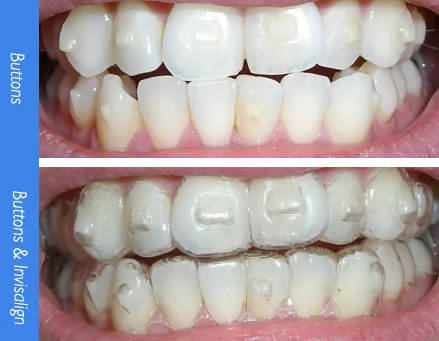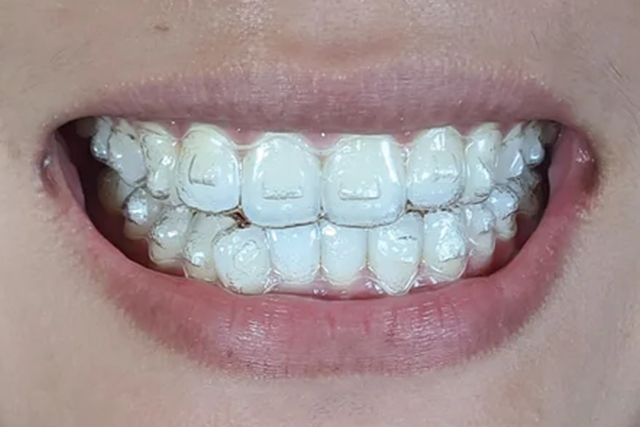Invisalign for Teens: A Modern Solution to Straightening Young Smiles
Invisalign for Teens: A Modern Solution to Straightening Young Smiles
Blog Article
Invisalign vs. Typical Dental braces: Which Option Is Right for You?
When taking into consideration orthodontic treatment, the choice between Invisalign and conventional braces provides several important factors that warrant mindful examination. Invisalign provides a discreet option with detachable aligners, while typical braces provide a much more noticeable yet efficient remedy for severe misalignment. Each option includes distinctive benefits and drawbacks associated with visual appeals, comfort, treatment duration, and expense. Recognizing these nuances is crucial for making an educated decision that straightens with your individual choices and lifestyle. The inquiry stays: which alternative will ideal satisfy your orthodontic requirements and assumptions?
Overview of Therapy Options

On the other hand, typical braces consist of steel braces and cords that are bonded to the teeth. This approach uses continual pressure with time to achieve positioning. While reliable for intricate orthodontic concerns, typical braces require regular gos to for changes and can present challenges in maintaining dental hygiene because of the trouble of cleaning up around braces and cables.
Both alternatives have their advantages, and the choice commonly rests on details oral problems, lifestyle preferences, and person conformity. Ultimately, getting in touch with an orthodontic expert is essential for establishing the most ideal treatment strategy customized to private requirements. Understanding the subtleties of each choice can substantially influence the total success of orthodontic treatment.
Aesthetic Factors To Consider
A substantial aspect influencing the selection between Invisalign and standard braces is the visual allure each therapy provides. Invisalign aligners are crafted from clear plastic, making them basically invisible when put on. This very discreet appearance is particularly appealing to grownups and teens who might really feel self-conscious about their orthodontic therapy. The capacity to maintain an all-natural smile throughout the placement procedure can dramatically boost the client's confidence in expert and social setups.
On the other hand, conventional dental braces contain metal braces and wires, which can be more obvious. While advancements in orthodontic innovation have brought about the advancement of smaller sized braces and tinted elastics, typical dental braces still preserve an even more obvious account. For some people, the presence of braces might prevent them from seeking necessary treatment.
Inevitably, the option between Invisalign and conventional braces might depend upon individual choices concerning visual appeals. Patients who focus on discretion frequently favor Invisalign, while those that are less concerned concerning presence may choose typical braces. Recognizing the visual implications of each option is important for making an educated choice that aligns with one's way of living and preferences.
Comfort and Convenience

In terms of benefit, Invisalign aligners are removable, allowing people to appreciate their favored foods without constraint and maintain optimum oral hygiene. Brushing and flossing are streamlined, as the aligners can be obtained throughout these routines, whereas conventional dental braces call for cautious maneuvering around wires and braces.
Furthermore, Invisalign's progressive system permits less orthodontic sees. Clients generally obtain several sets of aligners at as soon as, which can enhance the therapy procedure and minimize time invested in the orthodontist's chair. On the other hand, conventional braces require normal modifications, making them less convenient for those pop over to these guys with busy timetables. Invisalign. Generally, the comfort and ease of Invisalign make it an enticing choice for several people seeking orthodontic therapy.
Treatment Period and Efficiency
While both Invisalign and traditional dental braces work in dealing with dental imbalances, the duration of treatment can differ considerably in between both choices. Normally, Invisalign treatment can take anywhere from 12 to 18 months, relying on the intricacy of the case. The clear aligners function by progressively changing teeth into their wanted settings, and regular follow-ups with an orthodontist assistance ensure development remains on course.
In contrast, conventional dental braces typically require a longer commitment, normally ranging from 18 months to three years. This results from their fixed nature and the use of cords and brackets, which can be much more reliable for serious imbalances and intricate cases (Invisalign). The treatment performance of traditional braces is well-documented, as they enable for exact modifications and better control over tooth movement
Ultimately, the choice between Invisalign and traditional dental braces might depend upon both the awaited therapy period and the particular dental issues at hand. Consulting with an orthodontist is important, as they can supply customized referrals based on individual demands, ensuring the picked approach straightens with wanted results and timeframes.
Cost Contrast and Insurance Coverage Choices
Cost plays a substantial duty in the decision-making procedure for individuals considering orthodontic therapy, whether choosing for Invisalign or standard braces. On average, the cost of Invisalign arrays from $3,000 to $8,000, while typical reference dental braces typically set you back between $2,000 and $6,000. Elements influencing these prices consist of the intricacy of the instance, the period of therapy, and geographical area.
Insurance policy protection can considerably influence out-of-pocket expenses. Lots of dental insurance coverage plans supply partial protection for orthodontic treatments, but the specifics can vary extensively. It is important for patients to examine their insurance coverage to figure out the extent of protection for either alternative. Generally, standard dental braces may be a lot more regularly covered by insurance coverage strategies contrasted to Invisalign, which some insurance companies categorize as a cosmetic treatment.
In addition, a number of orthodontic methods use versatile settlement plans, making both therapy choices visit their website much more easily accessible. Patients should inquire about potential financing options and price cuts for upfront payments. Examining the overall expense, consisting of insurance advantages and layaway plan, is vital for making an informed decision that straightens with both visual choices and spending plan factors to consider.

Final Thought
In summary, the choice between Invisalign and traditional dental braces pivots on numerous aspects, consisting of visual choices, convenience, therapy duration, and cost. Invisalign uses a very discreet, removable option that assists in dental hygiene and nutritional adaptability, while standard braces may be preferable for intricate dental problems and typically come at a reduced cost factor. Ultimately, assessment with an orthodontist is vital to evaluate specific circumstances and establish the most ideal therapy alternative for achieving optimum dental positioning.
When thinking about orthodontic treatment, the selection between Invisalign and traditional dental braces presents numerous crucial elements that warrant cautious assessment.Contrasting Invisalign and standard braces reveals unique treatment options for orthodontic adjustment.While both Invisalign and conventional braces are effective in correcting dental misalignments, the period of therapy can differ substantially between the two options.Price plays a substantial role in the decision-making process for individuals considering orthodontic treatment, whether deciding for Invisalign or typical dental braces.In summary, the selection in between Invisalign and conventional braces pivots on several elements, consisting of aesthetic preferences, comfort, therapy period, and expense.
Report this page